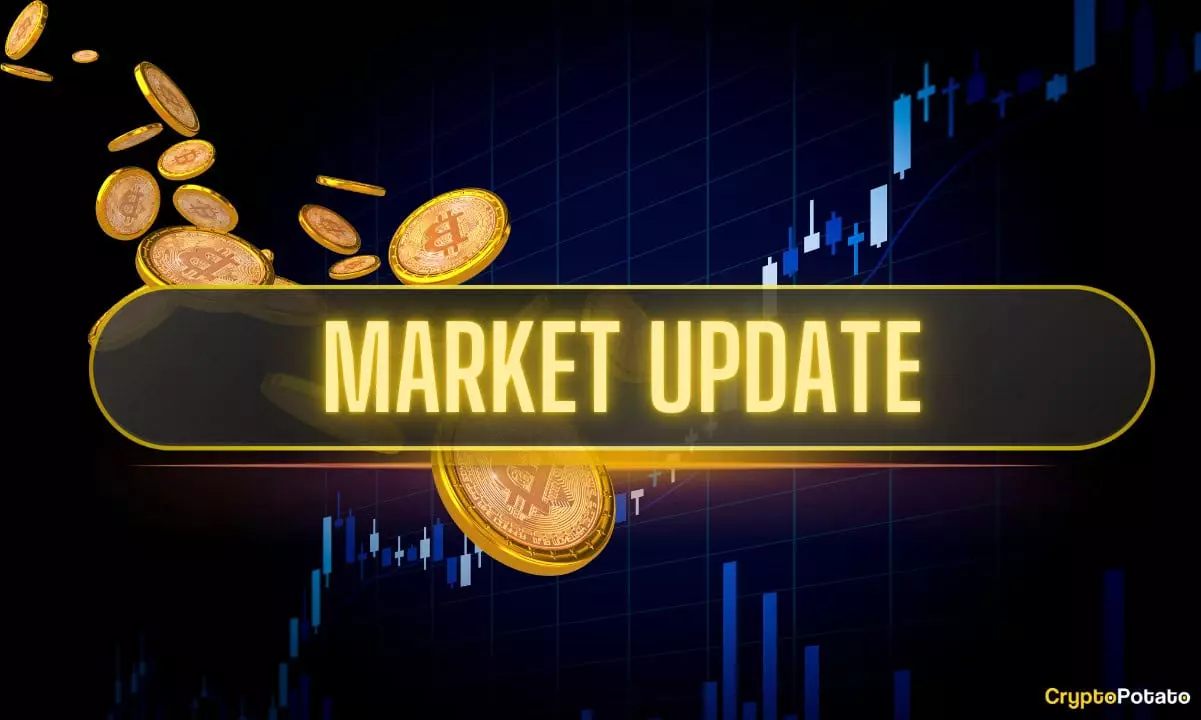In a landscape marked by unpredictability, Bitcoin continues to capture the attention of both seasoned investors and casual observers. Over the past week, the cryptocurrency market has shown a blend of resilience and vulnerability, presenting an intriguing commentary on global economic tensions. Bitcoin’s price fluctuations—from a precarious low of just under $75,000 to its recent ascendancy near $86,500—reflect not only its volatile nature but also a wider narrative about investor sentiment amidst political unrest and monetary policy concerns.
The surge last week, propelled by a pause in tariffs for nearly all nations except China, served as a potential lifeline for Bitcoin, revitalizing the momentum it desperately needed. For those who closely follow market trends, the price escalation to around $82,000 before breaching the $85,000 mark on Sunday is a testament to the dynamic interplay between external economic catalysts and Bitcoin’s intrinsic volatility. However, this brief moment of euphoria was soon met with the harsh reality of market rejection, a cruel reminder that cryptocurrencies are not immune to the gravity of international trade disputes and regulatory considerations.
The Role of Market Sentiment in Bitcoin’s Saga
Engaging deeply with the shifting tides of Bitcoin, it is essential to recognize the predominant factor driving market fluctuations—investor sentiment. Recent reports highlight aggressive accumulation by Bitcoin whales—large-scale investors holding significant stakes in the currency—demonstrating a concerted confidence in Bitcoin’s long-term viability. Despite the recent price stagnation, the commitment of these large investors indicates a belief that Bitcoin’s worth is not merely linked to current market prices but is underpinned by its distinct position as a digital asset.
Intriguingly, while Bitcoin’s dominance has overtaken the significant 60% mark in the market cap, this increase has particularly garnered attention considering the complete ecosystem that now supports it. Unlike 2021, the landscape today includes millions of coins engaged in transactions, providing a more robust foundation for market stability. This evolution reflects a more complex behavioral pattern of the investors, who are beginning to recognize the potential of Bitcoin beyond mere speculative trading.
Government Involvement: Blessing or Curse?
Further complicating the narrative is the increasing interest from governmental agencies in the regulation and management of cryptocurrencies. The suggestion that the U.S. administration might establish a national Bitcoin reserve funded by tariffs introduces an intriguing yet contentious topic. On one hand, it could legitimize Bitcoin as a substantial financial instrument, laying the groundwork for a new fiscal paradigm. On the other, the reliance on tariffs to fund such initiatives raises serious questions about the sustainability and ethical implications of intertwining cryptocurrencies with traditional revenue streams.
Undoubtedly, these governmental maneuvers carry the novel potential of stabilizing Bitcoin’s price in turbulent times, yet they also seem to illustrate a power struggle between innovation and regulation. As the cryptocurrency faces criticism and skepticism from traditional financial sectors, these potential government projects could serve as either crucial support or a detrimental overreach in an industry that thrives on its independence and autonomy.
Volatility, Consolidation, and the Future Outlook
As cryptocurrency enthusiasts ride the waves of Bitcoin’s latest antics, another aspect to consider is the possible trajectory the market may take moving forward. Current behavior suggests that Bitcoin may be entering a consolidation phase. With a realized capitalization of about $872 billion and tempered growth, cautious investor behavior is increasingly prevalent. The anticipation surrounding Bitcoin exchange-traded funds (ETFs) and large corporate buyers continues to linger, with many watching closely for signals that stability might soon return.
The market’s direction is likely to be keenly influenced by external factors—be it geopolitical events, macroeconomic trends, or regulatory changes—that can alter investor sentiment dramatically. If history teaches us anything, it is that the cryptocurrency realm has the capacity for rapid shifts, often dictated by the collective actions and emotions of its participants. As traders and hodlers wait for pivotal market movements, one cannot help but feel a sense of both anticipation and anxiety about what lies ahead for Bitcoin.
This duality of hope and caution lies at the heart of contemporary cryptocurrency discussions, making the present moment a fascinating point of observation in the ever-evolving story of Bitcoin and its place in the broader economic framework.

